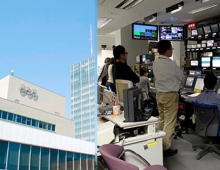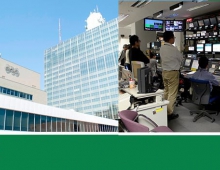
NHK To Start Testing 8K Broadcasting in 2016
NHK is planning to commence test 8K (Super Hi-Vision) broadcasting in 2016 and achieve the widespread use of 8K in 2020, the year of the Tokyo Olympic and Paralympic Games, in line with Japan’s present road map for 4K and 8K. The development of both 8K content and equipment is now accelerating towards these goals. NHK will exhibit the latest 8K content and equipment at NAB2015, the world’s biggest exhibition of broadcasting equipment.
The NHK booth will feature a 350-inch 8K theater where visitors from all over the world can experience the ultra high definition 8K images and 22.2-multichannel three-dimensional (3D) sound.
The technologies on display will include more practical 8K production equipment, the
latest 8K display and a new multiplex system for 8K broadcasting.
Two new light and compact 8K camera models have been developed for convenient broadcasting use. One is for use in sports relays and studio production, and the other a dockable model fitted with its own recording unit as the first portable 8K video camera recorder.
A new professional recorder has been developed to record ultra high definition 8K images.
A 85-inch 8K LCD display with built-in speakers can stand freely or hang on the wall to fit snugly into the living room space. It has the same appearance as a
conventional Hi-Vision display and presents the full 8K images with 22.2-ultichannel sound system.
The world’s smallest, 13.3 inch organic electro-luminescence display for 8K will also be exhibited.
In addition, a multiplex system for 8K broadcasting in Japan (a transmission and display system for the broadcast of images, sound etc.) will be exhibited at NHK's booth using an example MMT service.
The use of MMT (MPEG Media Transport) makes it possible to display information received via broadcasts and the Internet (communications) with correct timing on the same TV screen, permitting multi-viewing, connectivity with mobile devices and so on, for the realization of multifarious services.
Besides 8K in Japan, MMT system is also an element of the ATSC3.0 next generation terrestrial broadcasting system in the United States.
Shooting 120 frames per second, NHK's new 8K/120Hz Production System can capture even fast-moving scenes in high definition.
Attaching numerical values to the sound levels experienced on content even from different channels, a 22.2-Multichannel Loudness Meter - also on display - makes it possible to maintain a standardized sound level.



















